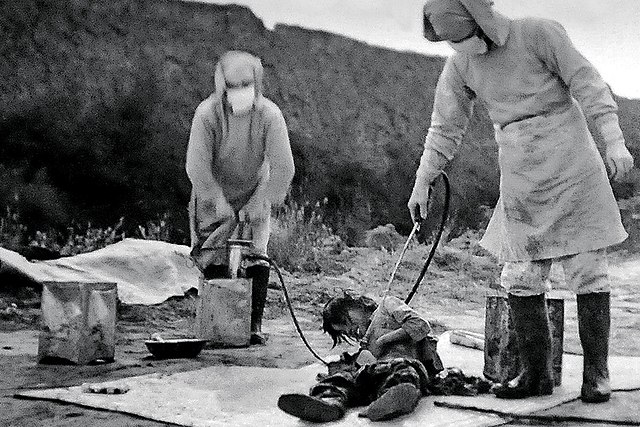Unit 731 , short for Manchu Detachment 731 and also known as the Kamo Detachment and the Ishii Unit, was a covert biological and chemical warfare research and development unit of the Imperial Japanese Army that engaged in lethal human experimentation and biological weapons manufacturing during the Second Sino-Japanese War (1937–1945) and World War II. It killed an estimated 200,000 to 300,000 people. It was based in the Pingfang district of Harbin, the largest city in the Japanese puppet state of Manchukuo and had active branch offices throughout China and Southeast Asia.
The Unit 731 complex. Two prisons are hidden in the center of the main building.
Building of the Unit 731 bioweapon facility in Harbin
Close-up photo of the Unit 731 main "square building" taken by Unit 731's aviation and photography class in 1940
Human dissection experiment room
Biological warfare, also known as germ warfare, is the use of biological toxins or infectious agents such as bacteria, viruses, insects, and fungi with the intent to kill, harm or incapacitate humans, animals or plants as an act of war. Biological weapons are living organisms or replicating entities. Entomological (insect) warfare is a subtype of biological warfare.
Shiro Ishii, commander of Unit 731, which performed human vivisections and other biological experimentation
Researchers working in Class III cabinets at the U.S. Army Biological Warfare Laboratories, Camp Detrick, Maryland (1940s).
U.S. authorities granted Unit 731 officials immunity from prosecution in return for access to their research.







